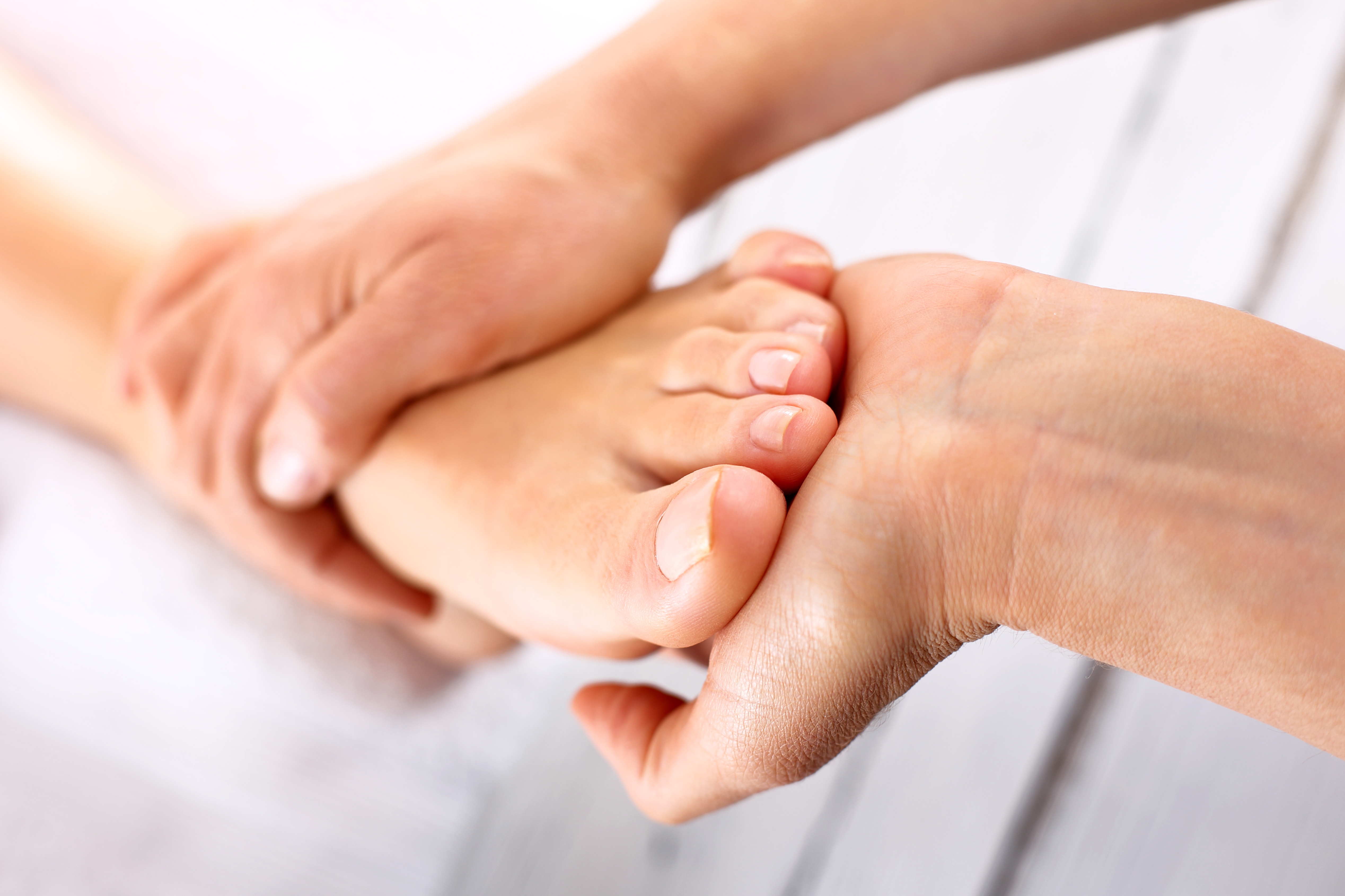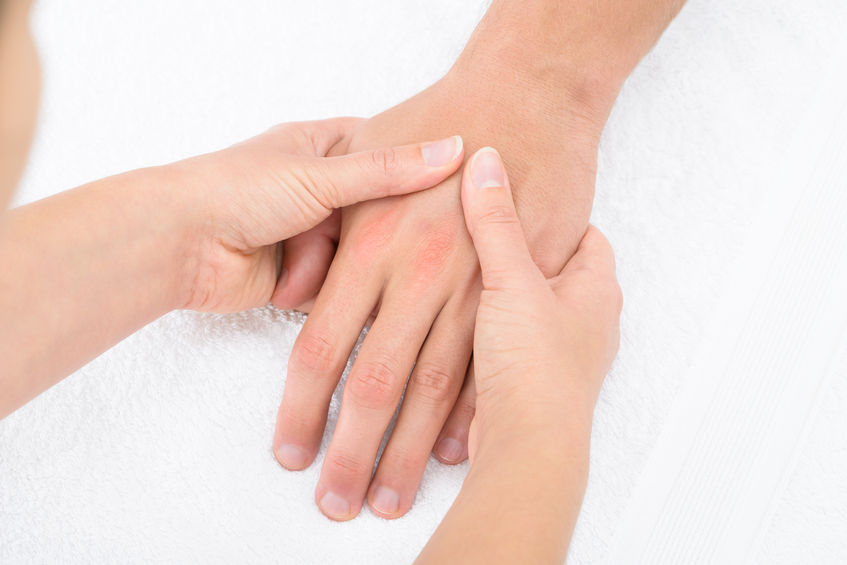Learn more about reflexology and the ancient holistic practice and how it can help you today. Our reflexologists have put together this comprehensive guide to the treatment, covering the history, theory behind the concept of reflexology and they way it works, and what to expect from a treatment. Click the quick links below to jump to a section or read on to unlock some of the fascinating facts about this massage technique.
- Quick facts
- What is reflexology?
- How does reflexology work?
- The history of reflexology
- Why opt for reflexology?
- What to expect from a reflexology treatment
Quick facts
- Duration: Usually 15, 20 or 30 minutes
- Body parts treated: Usually the hands & feet, but can also include ears, face and the lower part of the leg
- Techniques used: Acupressure techniques using thumbs and palms
- Equipment: Table or stool to rest hands or feet, respectively
What is reflexology?![]()
Reflexology - also known as zone therapy - is a massage therapy whereby pressure is applied to reflex points in the hands, feet and head. It is believed that these various reflex points are linked with other areas (or zones) of the body and that massaging these points can heal illness and improve the health of these areas. As well as offering holistic health benefits, reflexology massage is also very relaxing and is frequently used to relieve tension and stress.
Reflexology is defined by the independent health data research organisation, Cochrane, as "gentle manipulation or pressing on certain parts of the foot [or hand] to produce an effect elsewhere in the body".
Typically, reflexology does not require the use of oils or lotions, however in a spa setting these may be used, as they can allow for more flowing movements as well as offering moisturising benefits.
Mobile reflexology treatments are usually done on the hands to make it easily accessible and highly flexible, with little to no equipment needed and minimal space required. This makes this therapy a very popular service within the corporate setting, in offices or at exhibitions, or for those who want a short, on-the-go treatment.![]()
How does reflexology work?
The main theory of reflexology is the mapping of the reflex points to the other parts of the body. These points are divided into five zones on each hand or foot, drawing a line down vertically extending from each toe or finger.
It is understood that by manipulating the reflex points in these five zones, one can impact the health of the corresponding body part.
Reflexology is also understood in terms of natural body energy, or Qi (said ‘chi’), a concept originating from Chinese traditional medicine. Reflexologists believe that stress and illness can be caused by blockages of energy (Qi) within the body, which cause illness, limit the release of tension and prevent healing. By treating parts of the feet and hands that are connected with other areas within the body, it is believed that this Qi is manipulated to restore balance to this body part.![]()
The history of reflexology
As mentioned, some of the concepts that still drive reflexology today once derived from Chinese culture, but the practice of reflexology dates back to ancient Egypt, where the treatment was documented in the tombs of Ankmahor and Saqqara, as well as in ancient India over 5000 years ago.
However, this therapy was not introduced to the west until Dr William Fitzgerald first uncovered the effect of reflex points in 1913, alongside Edwin F. Bowers. Fitzgerald was an ear nose and throat specialist and found that applying pressure had effects on other areas of the body simultaneously. His theory was then further developed in the 1930’s and 40’s by nurse and physiotherapist Eunice D. Ingham. Ingham believed that the feet and hands were particularly sensitive reflex areas, and was the first to map these areas onto the body – thus 'Zone Therapy' in its first form was born.
Ingham’s opinion was that congestion or tension in any part of the foot was mirrored in the corresponding part of the body and her theories and techniques are still utilised by reflexologists today. Ingham’s methods are taught by the International Institute of Reflexology in a course titled the Original Ingham Method®, and many other techniques and courses have been derived from her 40 years of work in reflexology.![]()
Why opt for reflexology?
Reflexology is incredibly relaxing, and is a great treatment for everyone of all ages. It requires no equipment and is a very simple therapy, so can be enjoyed anywhere and with minimal preparation.
In addition to this, whilst all massage therapies are great natural healers, reflexology focuses specifically on rebalancing your health and overall balance within your body. It is also a therapy you should consider for treating symptoms all over your body, from headaches and sinus trouble to more internal aches and pains.![]()
What to expect from a reflexology treatment
All massage treatments should always begin with a quick safety check to ensure that you are fit and well, and essential to highlight any health issues to your therapist. If it is a mobile treatment, the feet or hands are the most usual places to receive treatment, however if you are at a spa, the ears and head are also common areas to treat for reflexology. Many spa facials for instance may incorporate some reflexology techniques into the treatment.
The therapist will then use a mixture of acupressure techniques along your hands and/or feet, and there is no need for oil or lotion, but it is a pleasant addition if you wish to have it. If you have any injuries, ailments, or sore parts of your hand, foot, fingers or toes, do make sure to let your therapist know. The treatment should be as enjoyable and relaxing as possible, so this can help your reflexologist ensure you are comfortable.

